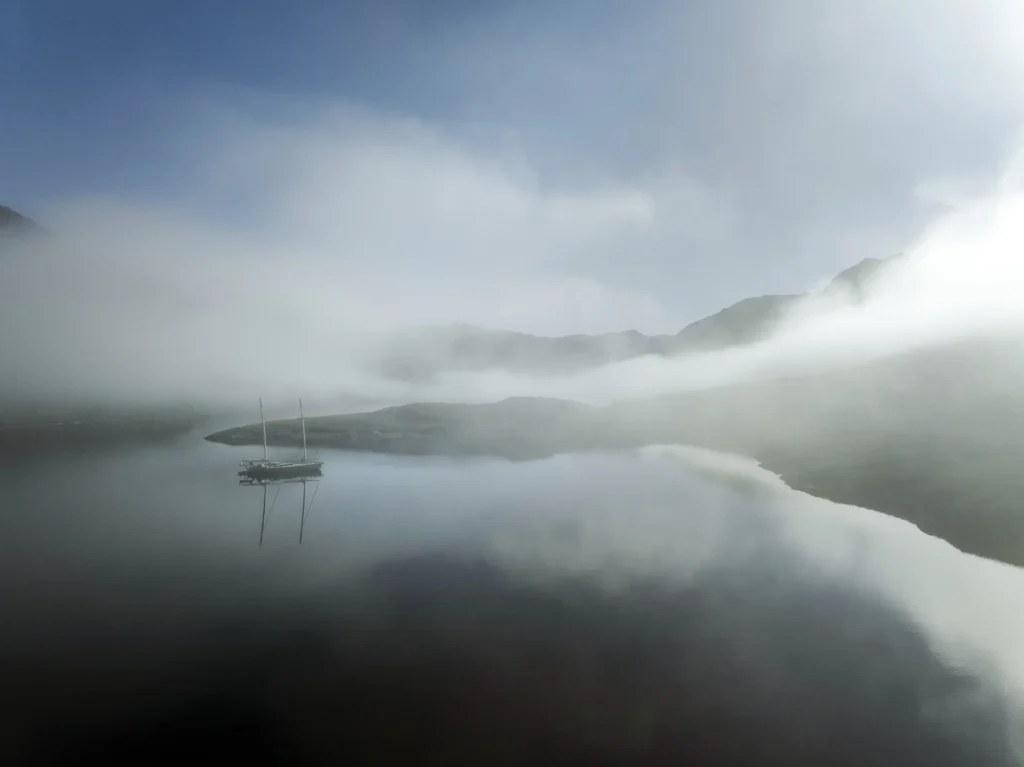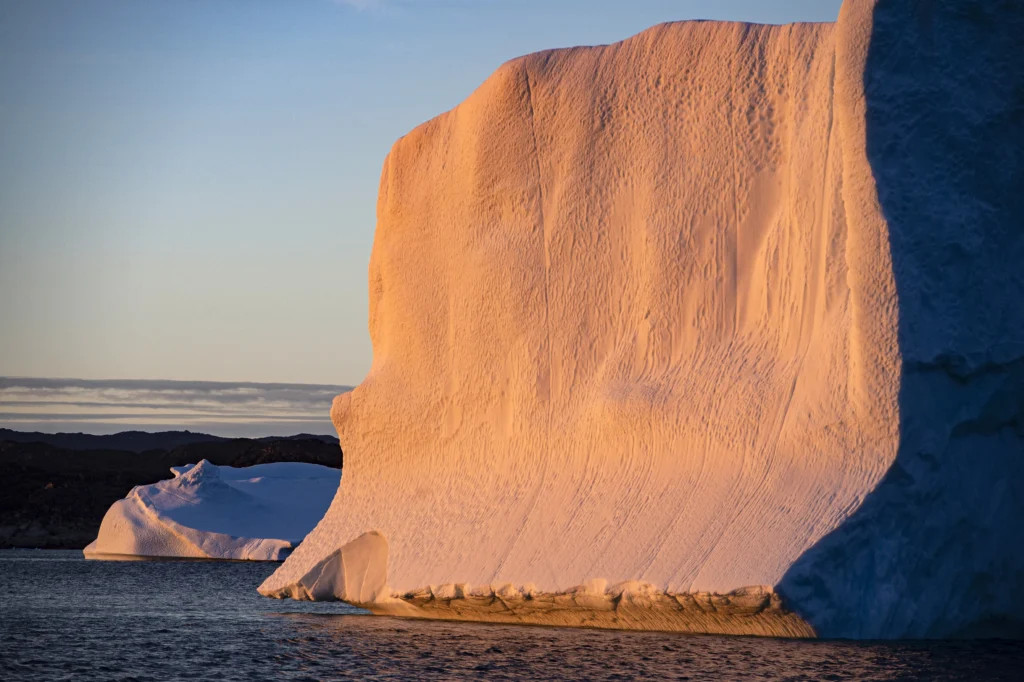Shipping
The ship’s cook takes us into the fogs, ice and other enchantments of Greenland, aboard a 30-meter aluminum scientific schooner.
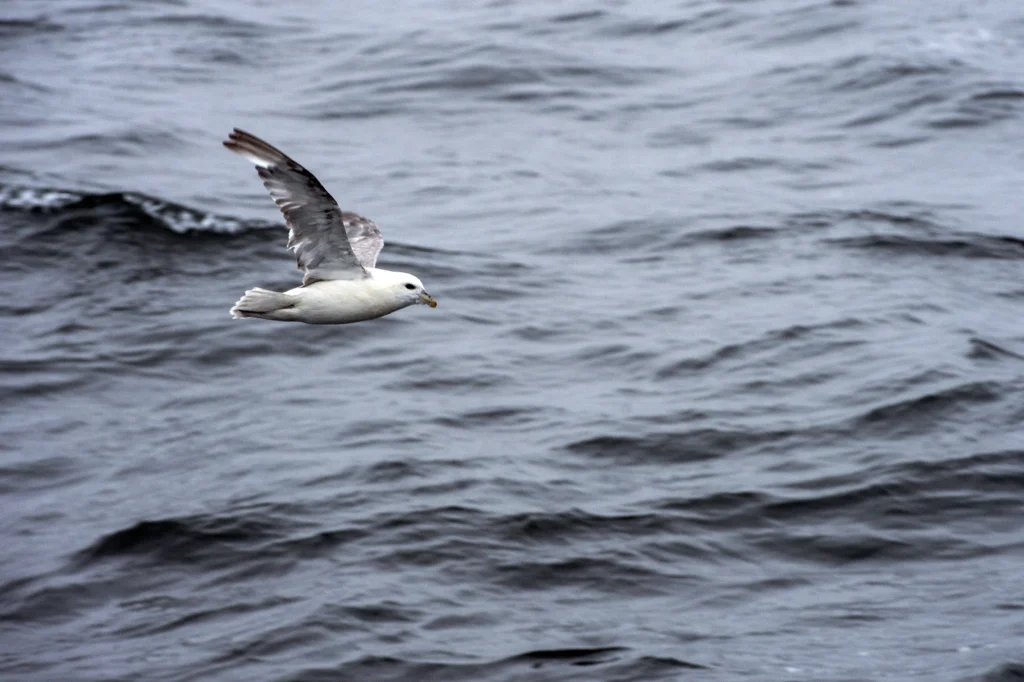
THE SHIP TAKES ON NEW TEAMS. ©Julien Girardot
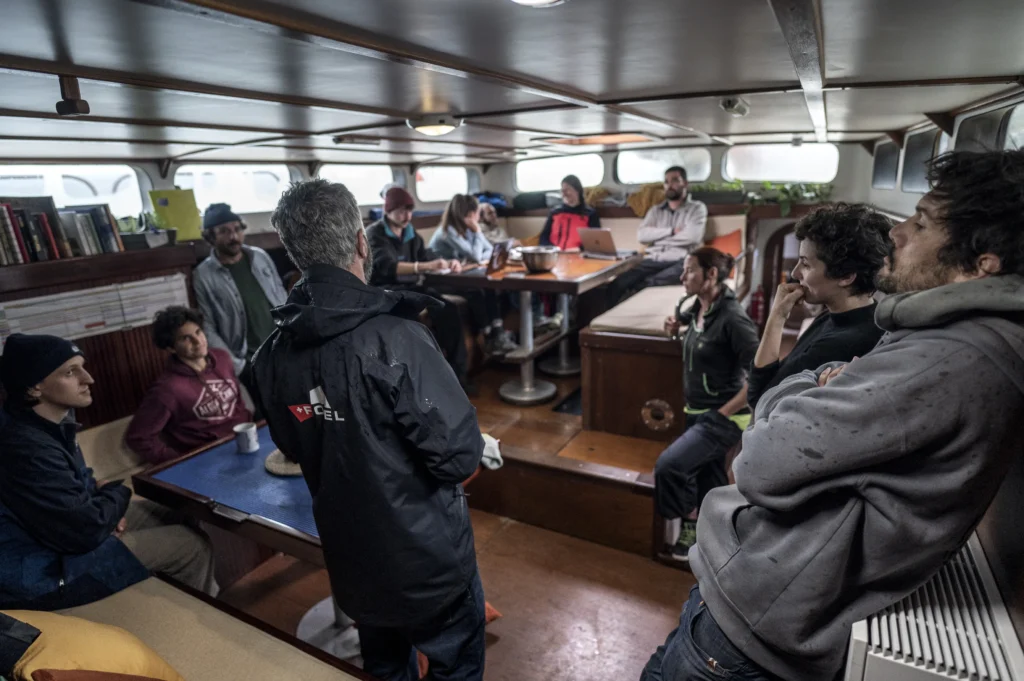
In 2022, the Swiss association Forel Héritage bought the schooner Paratii-2 from the Brazilian adventurer Amyr Klink. A crew was sent to Brazil to bring the ship to Lorient, its new home port. I embark for the final stretch from Lisbon to Brest. Prior to her first mission to Greenland, the yacht enters the shipyard for a year and a half. The sailors, in correlation with the scientists, will transform this 30-meter pleasure boat into a research sailing ship. Almost ready for departure, the boat was renamed Forel by the association in homage to François-Alphonse Forel (1841-1912). A native of Switzerland, Forel was the founding father of limnology, the science of studying and comparing lakes. In May 2024, I join the crew as they finalize their work. For three weeks, I fill the boat’s holds, equip a refurbished galley and make sure we have everything we need. We cast off from Lorient on June 8, heading northwest. It will take twelve days at sea to reach our first unexpected Greenland stopover: Paamiut, on the southwest coast of Kalaallit Nunaat. Ice conditions were difficult, and we tried several approaches. On June 25, we finally reached Narsaq, our base during the GreenFjord scientific mission. This time, we passed through, but nature reminded us that here in Greenland, she’s the one who decides.
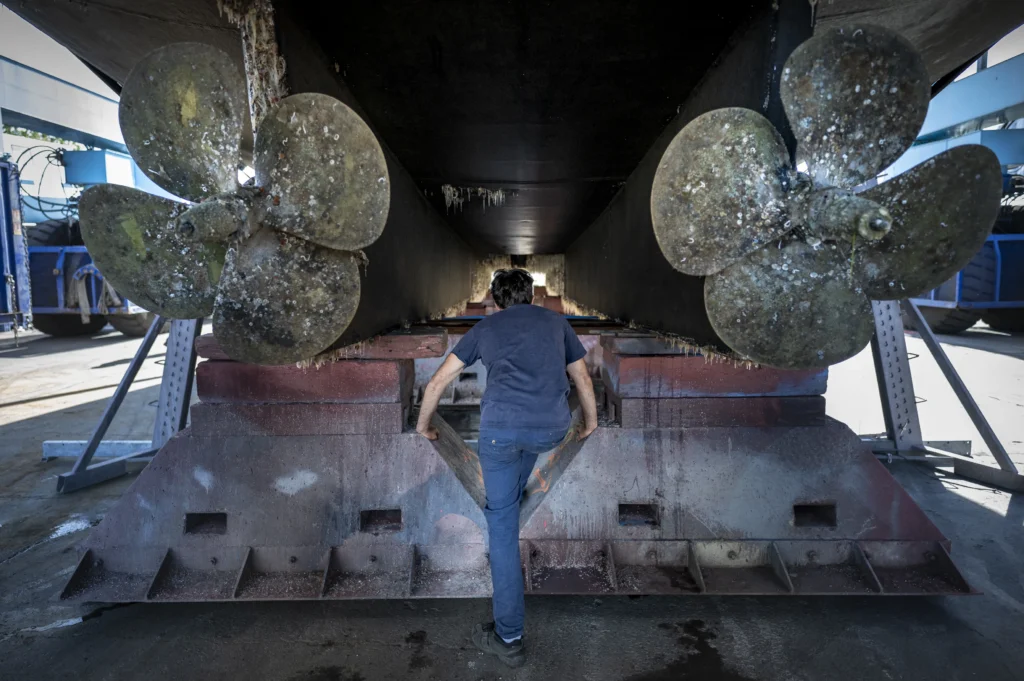
WITH ITS SIGHTS SET ON THE FIRST MISSION TO
GREENLAND IN SUMMER 2024. ©Julien Girardot
La Transat
The streets of Brest are bustling with activity on this market morning. At the terrace of a bistro, some people are finishing their night, while a fishmonger shouts at the top of his voice: “My turbot is fresh! On the lookout for a good piece, I wander among the stalls and stop in front of a small shellfish merchant. Two enormous crabs caught my eye. “10 kg! – I’ll take them!” That’s what I’ll need to feed the crew I set sail with yesterday from Lorient. With my arms full, I walk down the narrow streets to the Marina du Château. The air is chilly, but the sun gives a touch of the carefree softness of a fine summer’s morning. Overlooking all the other masts in the Marina with her two red arrows, the outrigger schooner Forel is moored, connected to the quay by the diesel pump which has been running for two hours, the goal of this short stopover in Brest. Tonight, we set course for Greenland.
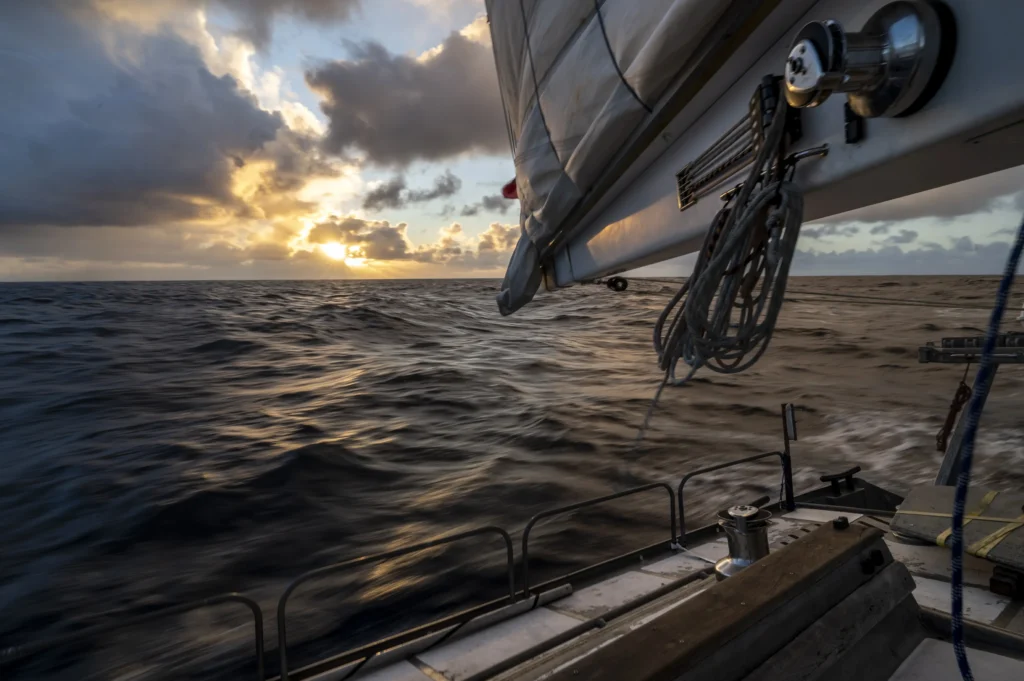
OF PASSING BETWEEN OLD AND NEW OWNERS- ©Julien Girardot
There are seven of us on board. Yohann, the captain, Brieuc, the chief mate, Erwan, the chief mechanic, and two deckhands, Nicolas and Nitya. Yvan, for his part, is an oceanography technician, who will be checking the instruments installed during the transatlantic crossing. They have to be in perfect working order when the scientists arrive. As for me, I’m in the kitchen and behind my lenses. The first part of the course is windless, giving Erwan the opportunity to test the new engines, two 410-hp Cummins. In fact, this navigation will be the opportunity to check everything. As is the post-building tradition, anything that has to break, will break. Daily life is punctuated by quiet moments, alarms and repairs. Fortunately, the workshop is well-stocked, the heads are well-shaped and every problem has its solution. We pass the south of Ireland. At sunrise, puffins greet the crew, islands appear in warm mists, but this summer tranquillity is deceptive. Yohanna warns us that the next few days are likely to be rock’n’roll. Indeed, the wind is rising fast. Under sail, the speedometer is showing good averages. It goes on all night, and by early morning the saloon is deserted. The swell is big, and there’s quite a chop in my cup too. We hold on to open the drawers. Every maneuver is a bit of a struggle. On deck, Nicolas – on watch with Brieuc – is at the helm; a minor problem with the pilot means he has to endure the very uncomfortable conditions on deck.
Passage forbidden
The following night, the wind did not ease and a problem with the foresail forced us to lower the sails. We didn’t send back any canvas, however, as the next day the calm returned. We’re approaching the mythical Cape Farvel after ten days at sea from the Cité du Ponant. From Greenland’s southernmost point, we can’t see a thing, the fog has set in for good and we’ve already lost 10°C. Yohanna looks up from his computer and confirms that we can’t reach Narsaq any time soon. Satellite images leave no room for doubt. A strong gale is forecast. On the east coast, a hundred miles to the north, the navigation software indicates a shelter. The small village of Paamiut, population 1,350, seems to be our salvation.
Off we go! Twenty-four hours later, the fog finally lifted and we crossed our first iceberg field. For most of us, this grandiose spectacle was unprecedented. Moored at the Paamiut wharf, we waited more than a week before looking for our first passage to Narsaq. Meanwhile, Baptiste Régnier, freshly arrived from France, takes over from Yohann at Forel’s helm. Our new captain has ice experience, and is also Forel’s maritime coordinator, working hand in hand with Stéphane Aebischer, science and logistics coordinator. We soon left Paamiut. Baptiste is going to try his luck by bypassing the ice that blocks the way through an adjoining fjord. The route is longer, but seems safe. One risk, however: if the ice were to block all the exits. It’s up for grabs!
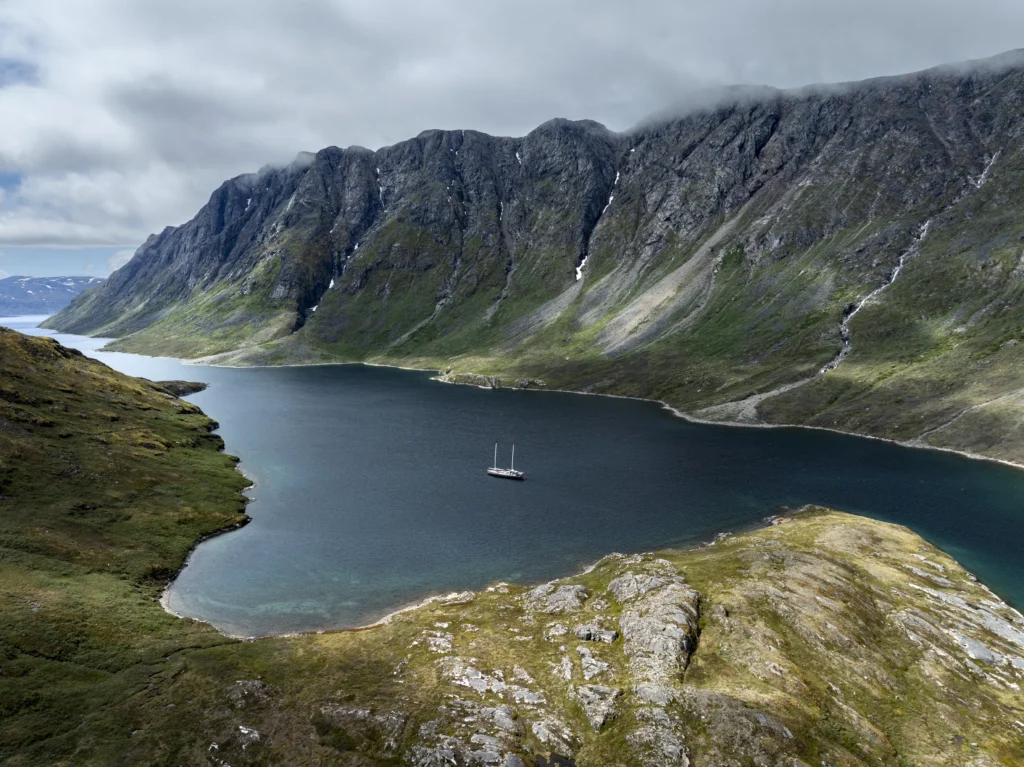
Mystic quarter
I’ll never forget that night shift with Baptiste. In the darkest hours of what is supposed to be a night, the light is a deep blue. Navigating by sight, binoculars and instinct, it’s an active and permanent four-eyed watch. Occasionally, an ice cube rubs along the hull with a high-pitched metallic noise, breaking the monotony of the engines’ hum. “But how can such a small ice cube make so much noise?” I go back and forth to the galley to refill the cups of hot coffee. There’s no wind, but the simple act of moving forward creates enough air to freeze our noses. The game that night is to find a way through this labyrinth” – What do you think about heading out to sea, we can get around this clump of ice blocking the road. The way seems clear… – OK, I’ll get closer.” A little further on, what looked like a channel turns into a real carpet of ice. Wow! We finally try to decipher a succession of mirages. The mists are ice cubes, the coast is actually the mist, this rock is an ice cube, the pack ice is the sky…? Nature plays tricks on us, but it’s fair game. “Look over there, along the coast, it looks like a gap. In this damp, cold atmosphere of half-night, Forel seems to move forward like a spaceship in an asteroid field. The sometimes suggestive shapes of the icebergs we pass in slow motion are trying to tell us things… It’s like an infinite museum filled with living works, frozen forever, it’s totally mystical, the mind rambles. But you have to stay awake. Snug and warm in their bunks, our friends trust us. Four hours on watch, I’m exhausted. Brieuc and Nico relieve us. When I wake up a few hours later, we’re making good speed up an ice-free fjord, the sun is high, the sky is blue, it’s summer. What a contrast to this night shift. We drop anchor in a magnificent bay. Herds of wild musk oxen populate every shore. With them, we are alone in the world. Baptiste’s readings indicate a safe passage to Narsaq, but we have to wait two days. In the meantime, hiking, mussel fishing and contemplation under a scratchy air, that’s the kif. Thank you ice cream for offering us this unique moment of travel, engraved in each of us.
Narsaq and GreenFjord
After a day’s sailing, we reach Narsaq four days behind schedule. There’s no time to lose. The very first scientific project to book Forel is GreenFjord. The aim is to understand the difference between a fjord fed by a glacier ending in the sea and one fed by a glacier ending on land. A four-year, multi-disciplinary research program aims to reveal how climate change is affecting the fjords of southern Greenland, complete and highly complex ecosystems. Six scientific disciplines make up GreenFjord. On land, two independent teams are studying the glaciers. They bivouac for weeks at a time to collect data and report on their observations – this is terrestrial science. In the villages, to talk in schools, with politicians, a social science program is run by another team. Including the local population in the project is one of GreenFjord’s major objectives. The seven scientists on board unwind cables, plug in all kinds of instruments and wake up the machines one by one. Forel’s entrails are now home to a veritable anthill. For the next ten days, the boat will be at its maximum mission capacity – twelve people. The nights will be short, the activity intense. The aft part of Forel, which is mainly devoted to science, is a surprising place for a ship of this size, and a real asset for remote expeditions. Used by the previous owner as a storage area, the Forel team and architects Olivier Petit and Gianluca Guelfi expertly converted the space during the construction phase. It features three laboratories: wet, dry and clean (a major asset for science) and numerous instruments. Sharing the daily life of scientists at work means changing our perceptions, understanding things that simply don’t occur to us. Sometimes, scientific analysis transforms an esoteric thought into something concrete. But isn’t the beauty of science that it also has its limits? There comes a point in research when you can’t push it any further, when it remains a mystery…
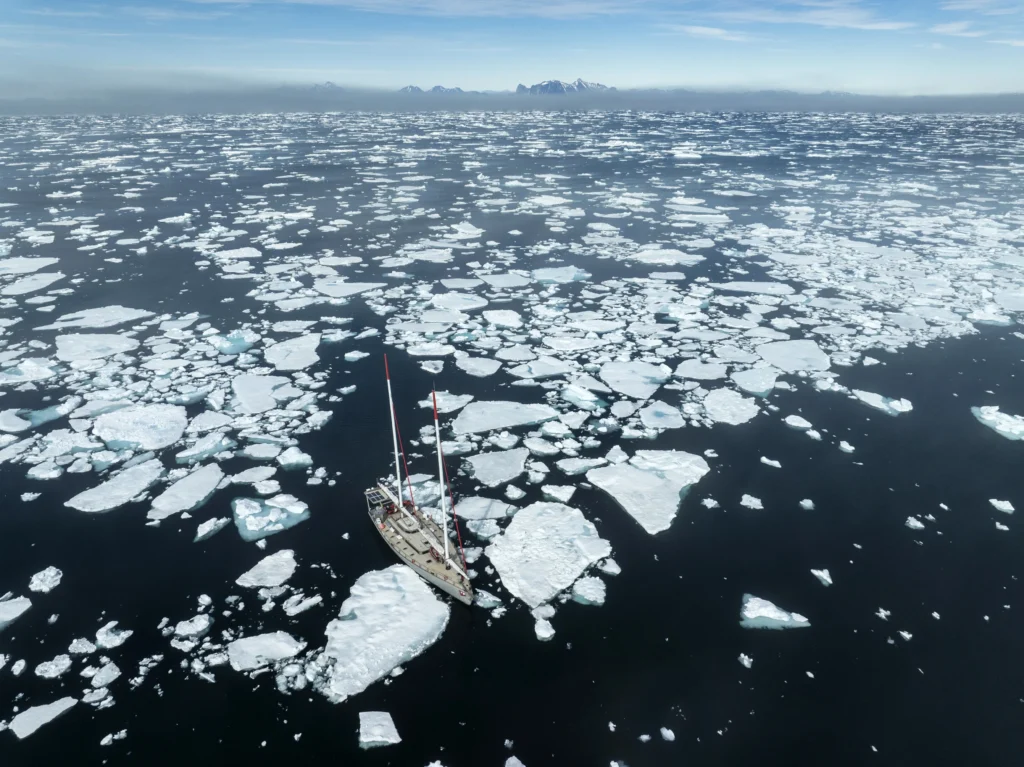
BLOCKING THE FJORD ENTRANCES AND PREVENTING ANY APPROACH. ©Julien Girardot
The future of Greenland?
As the scientific mission draws to a close, I bump into Sam in the saloon and we strike up a conversation. He shows me a map of GreenFjord: “You see here, this is the other fjord: Igaliku. It’s very different from Sermilik in that its glacier has retreated beyond the fjord/coast interface and its meltwater flows into the fjord via a river. It no longer benefits from upwelling. Fisheries in this type of fjord have almost disappeared. This is a tragedy for local fishermen. Greenland’s economy is based on fishing (90% of exports). The Sermilik fjord represents what Greenland has always known for thousands of years. But the case of Igaliku will be repeated on a large scale, and this type of fjord will become the new norm here. There will be far fewer fish and icebergs. With vegetation growing, global warming is also seen as an opportunity. We’re now seeing sheep farms and market gardening. Young people, inspired by the Internet, are developing new economic activities. Ocean liners, seen as a threat by some, are a godsend for others. The region is undergoing an extremely rapid transformation, both environmentally and socially. Greenlanders number less than 60,000 and have ten to twenty years, maybe less, to answer many existential questions; their independence; mining, pressure from great powers, etc. Like Donald Trump, who has vowed to make it his own, Greenland is attracting a lot of interest but would like to decide its own future, especially after being under the authority of the Danish crown since 1721.
Forel, a perfect combination
Back in Narsaq, through the portholes, we see the Sanaa docking. In the galley, I prepare the last dinner for this incredible team. Tonight, we celebrate the end of the mission. Julia comes over for a little chai. We talk about what’s next: “These ten days have convinced me. The platform is very promising. The environment here is challenging, but Forel is very flexible, going where other, equally well-equipped but bigger ships couldn’t go. There’s always a plan B, and I like that. The way it’s been designed, the philosophy of the boat and the people operating the project: you get the feeling that anything is possible. A good platform, a good philosophy, it’s a perfect combination.” Tomorrow, the scientists disembark and I return to France, mission accomplished. It’s been an intense experience since Lorient. I leave Greenland with incredible images in my head, the magic of the ice and Forel’s energy. I’m grateful for this adventure, but excited to be back in my own backyard. In France, it’s real summer.
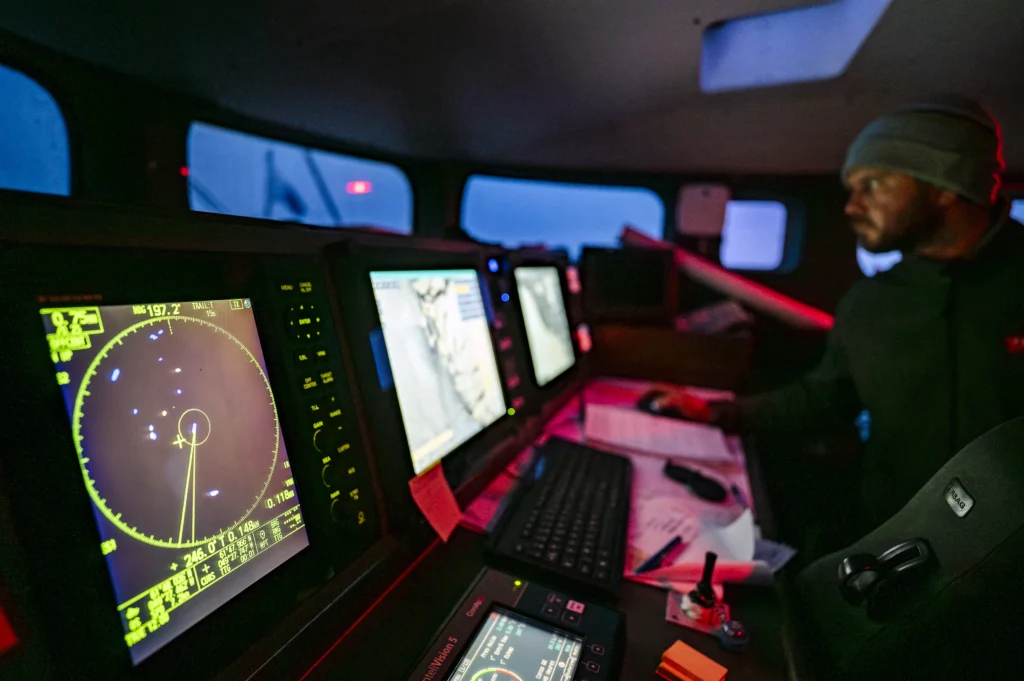
REGNIER, CAPTAIN AND MARITIME MANAGER OF THE PROJECT. ©Julien Girardot
Navigation “on the rocks”
Polar navigation forces us to consider the ice. The ice pack formed in winter at the North Pole is breaking up. It carries numerous plates that drift southwards. Added to this flow are huge blocks of ice detached from the glaciers at the bottom of the fjords. In this season, the concentration is nine out of ten. Despite this abundance of ice, the passages into the southern fjords – where the villages are located – are rarely blocked for more than a week.
The Forel research platform is planning a second season – from May to September 2025:
- 3 campaigns: 1 in Canada (St. Lawrence Estuary/Saguenay Fjord) and the other two in Greenland (NW and SW).
- A total of 10 principal investigators (PIs) and 7 research programs.



